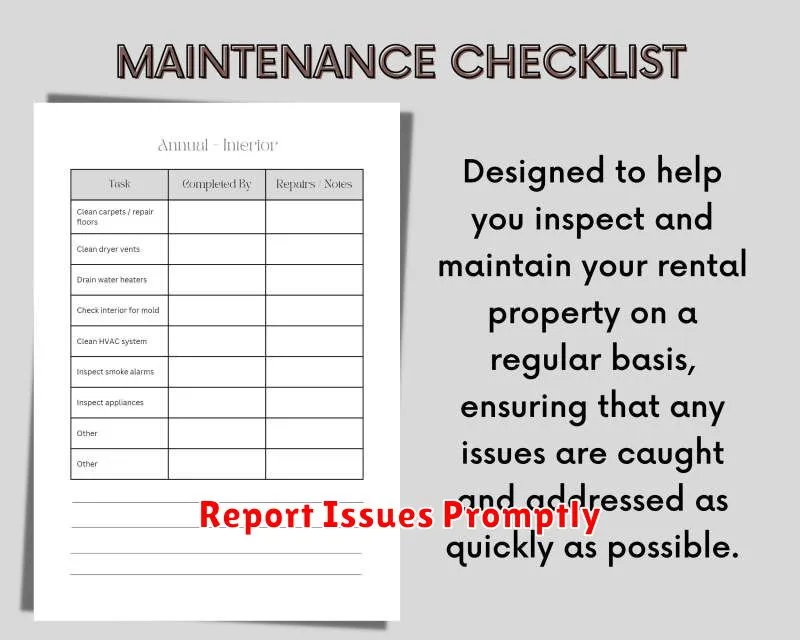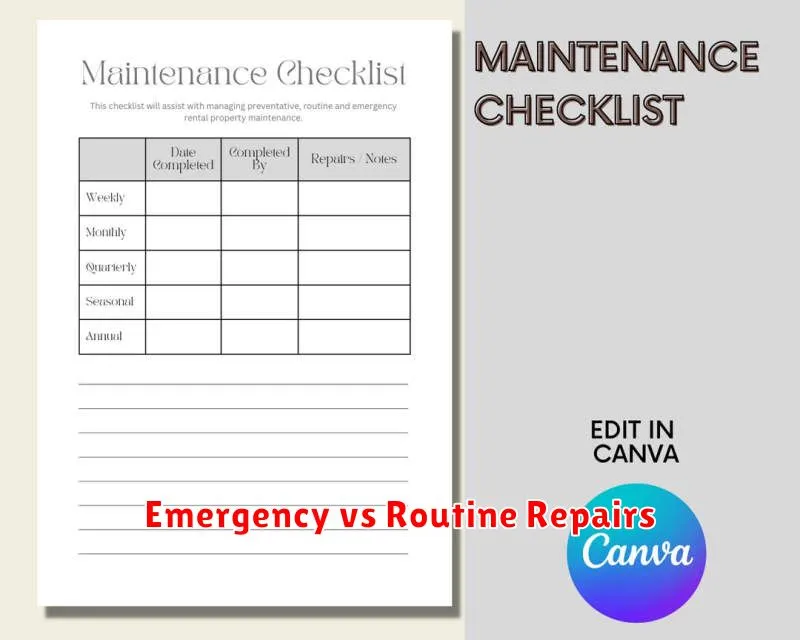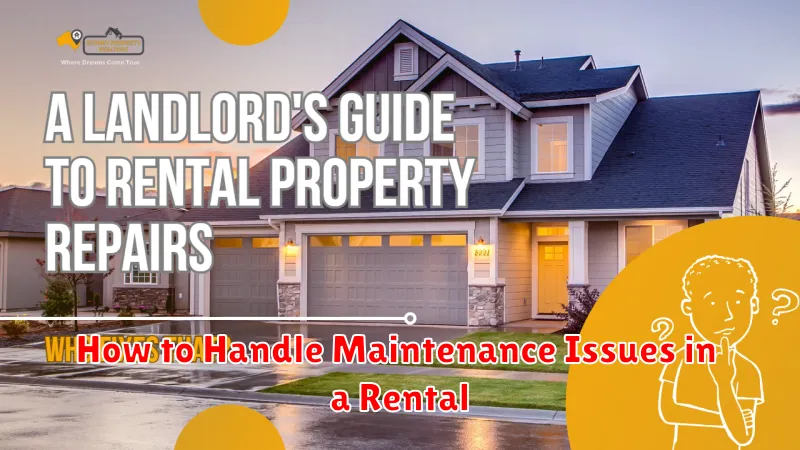Handling maintenance issues in a rental property can be a significant source of stress for both landlords and tenants. Effectively managing these issues is crucial for maintaining a positive landlord-tenant relationship, preserving the property’s value, and ensuring a safe and habitable living environment. This comprehensive guide outlines best practices for addressing rental maintenance, covering everything from preventative measures to handling emergency repairs. Whether you are a seasoned landlord or a first-time renter, understanding your rights and responsibilities regarding maintenance requests is paramount.
Navigating the complexities of rental repairs can be challenging. This article will equip you with the knowledge to handle common maintenance problems proactively, understand legal obligations related to property maintenance, and establish clear communication channels with your landlord or tenant. From routine maintenance tasks like appliance upkeep and landscaping to addressing more serious concerns such as plumbing or electrical issues, this resource provides practical advice for handling all aspects of rental property maintenance. Learn how to create a maintenance plan, document repair requests, and ensure that your rental property remains in optimal condition.
Know What the Lease Covers
Your lease is the most important document regarding maintenance responsibilities. It outlines what repairs are your responsibility as a tenant and what falls under the landlord’s purview. Carefully review your lease agreement for specific clauses related to maintenance.
Common landlord responsibilities include structural issues, plumbing, heating, and electrical systems. Tenant responsibilities often involve minor repairs, light bulb replacements, and maintaining cleanliness.
Look for clauses addressing:
- Appliance repair/replacement: Who is responsible for fixing a broken refrigerator or oven?
- Pest control: Is the landlord or tenant responsible for pest extermination?
- Landscaping: Who is responsible for lawn care and snow removal?
Understanding these details upfront will prevent disputes and ensure a smooth tenancy.
Report Issues Promptly

Timely reporting is crucial for effective property maintenance. Promptly reporting issues helps prevent further damage and ensures a faster resolution. A small leak, for example, can escalate into a significant problem if left unattended. Similarly, a minor electrical issue can become a safety hazard if not addressed quickly.
Refer to your lease agreement for the specific reporting procedures outlined by your landlord or property management. This typically involves submitting a written request or utilizing an online maintenance portal. Be sure to document the issue with a clear description, including the date and time you noticed the problem, its location, and any relevant details.
Important Note: Do not attempt to repair the issue yourself unless explicitly permitted in your lease. Unauthorized repairs may violate your agreement and could lead to liability issues.
Keep Written Records
Maintaining comprehensive written records is crucial for both landlords and tenants when addressing maintenance issues. These records serve as valuable documentation for tracking repairs, expenses, and communication related to the property’s upkeep.
For Landlords: Detailed records help manage finances, demonstrate compliance with legal obligations, and provide evidence in case of disputes. Document all maintenance requests, repairs performed, associated costs, and communication with tenants.
For Tenants: Written documentation protects your rights by providing proof of reported issues, requested repairs, and follow-up communication with the landlord. Keep copies of all maintenance requests, repair confirmations, and any related correspondence.
This documentation can be invaluable in resolving disputes and ensuring that both parties fulfill their responsibilities regarding property maintenance.
Follow Up with the Landlord
If you haven’t received a response within a reasonable timeframe (typically 24-48 hours for urgent issues, and a few days for non-urgent ones), it’s time to follow up. Document each attempt to contact your landlord. This record will be helpful if the issue escalates.
Politely but firmly reiterate your request, referencing your initial communication (date and method). If you still don’t receive a response, consider sending a written notice via certified mail. This provides proof that your landlord received the communication. Check your lease agreement; it may outline specific procedures for handling maintenance issues and communication requirements.
Depending on your local laws and the severity of the issue, you might have further options, such as contacting your local housing authority or tenant’s rights organization. However, continuing open communication with your landlord is generally the most effective first step.
Emergency vs Routine Repairs

Distinguishing between emergency and routine repairs is crucial for both landlords and tenants. Emergency repairs demand immediate attention to prevent further damage to the property or to ensure the safety and health of the occupants. These typically include issues like a burst pipe, a gas leak, a broken heating system in winter, or a major electrical malfunction.
Routine repairs, on the other hand, address less urgent issues that don’t pose an immediate threat. These are typically handled within a reasonable timeframe and might include things like a dripping faucet, a sticking door, or a minor appliance malfunction. A clear understanding of this distinction helps ensure prompt action for critical situations while allowing for scheduled maintenance for less pressing concerns.

